#Amphibolips confluenta
Explore tagged Tumblr posts
Text

Scientific Name: Amphibolips confluenta Common Name(s): Spongy oak apple gall wasp Family: Cynipidae (gall wasp) Life Stage(s): Larva Location: Plano, Texas Season(s): Winter
This is what one of these looks like on the inside.
#Amphibolips confluenta#spongy oak apple gall wasp#Cynipidae#Plano#Texas#winter#brown#oak apple#gall wasp#Hymenoptera#gall#insect#bugblr
12 notes
·
View notes
Text
This is actually only true of some gall wasp species. Whether a gall has just one larva or multiple depends on the species (and generation)! As far as I can tell, the gall in this meme is the asexual generation of Amphibolips quercuspomiformis, the live-oak apple gall wasp, which does in fact contain multiple chambers with multiple developing larvae (source). Here's what the inside of a developing gall of this species looks like:
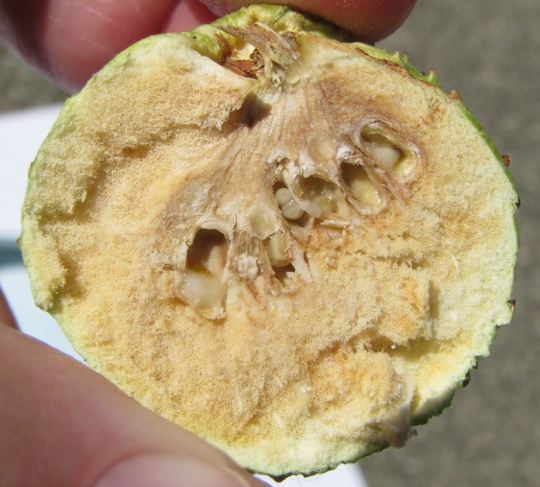
(image via Karlyn H. Lewis)
As you can see, there are multiple larvae inside.
It's an understandable confusion because there are some very similar galls that only have one chamber with a single larva inside. Even within the same genus, there are numerous other species whose galls only contain one larval chamber. The species you showed a cross-section of is Andricus vaccinifoliae, the Golden Oak Apple Gall Wasp.
The information about the sexual and asexual generations is accurate, although it's worth noting that not all gall wasps have this alternating of generations. And there are many species that we simply don't know enough about to know whether they have it or not. (There are so many undescribed gall wasp species.)
There's a huge variety of wasp galls! The images and diagrams you used are from references for a variety of different species. What's true of one isn't true of them all! Here's a few other closely related galls:
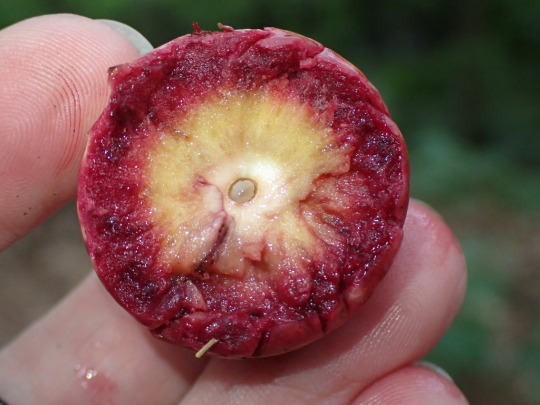
Amphibolips quercusjuglans, Acorn Plum Gall Wasp, via mamiles on inaturalist
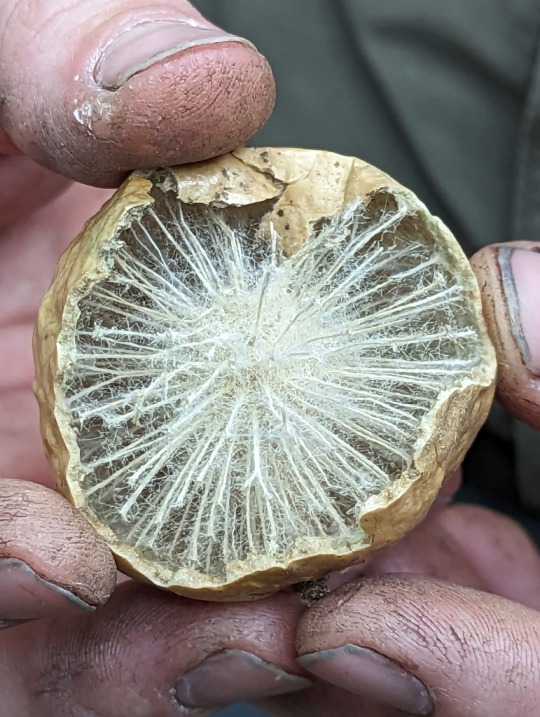
Amphibolips confluenta, Spongy Oak Apple Gall Wasp, via Amber Leung on inaturalist
And that's just the same genus, with similar structured galls! Galls are crazy diverse, both inside and out. This is all just oak gall wasps, which are only the tribe Cynipini. The rest of Cynipidae contains other species which gall different plants besides oak (such as blackberries, rosinweed, and more). Meanwhile, numerous other families of wasps, mostly within Chalcidoidea, also make galls (and this evolved completely independently, numerous times). Aaaand then there's other insects that make galls, too... it's a beautiful world!
Lastly, if I'm going to be a little pedantic: even in single-chambered galls, there might be multiple women. Galls are often occupied by parasitoids (who always eat the gall-inducer) and inquilines (who live inside the gall to eat the plant tissue and take advantage of the shelter it provides, though they sometimes also eat the gall inducer while they're at it), which are often other tiny wasps! So, sometimes you'll end up with multiple wasps from a single gall, even if there was only one gall-inducer in there to start with. The joys of symbiosis <3
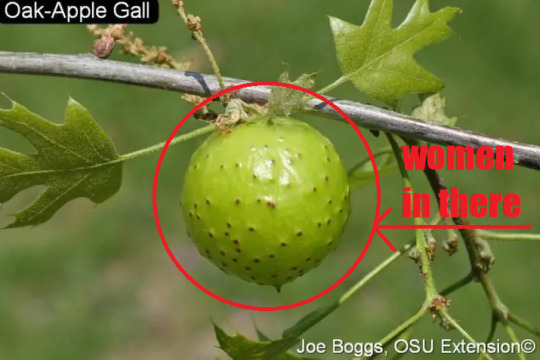
#bugs#hi i'm crawling out of oblivion to talk about galls#i don't even have a tag for informational replies and stuff#uhhhh#galls#cynipidae#hymenoptera#entomology posting#entomology#gall wasps#amphibolips#bugposting#wahoo
5K notes
·
View notes
Photo

"Oak Apple Galls" commonly form on oak trees and sometimes on plants in the willow and rose families. They’re actually deformed leaves that have been modified by secretions from the larvae of a tiny, stingless gall wasp species, Amphibolips confluenta. In the spring, a female wasp injects an egg into an oak-leaf bud; after the larva hatches, the gall structure begins to develop, protecting and nurturing the immature wasp until it emerges as an adult in June or July. The gall is green and spongy at first during the insect’s larva and pupa stages; it becomes brown and papery after the adult emerges in summer, and eventually drops off the tree in fall or winter. #oakapplegall #oakapplegallwasp #waspsofinstagram #galls (at Carroll, Maryland)
0 notes
Photo
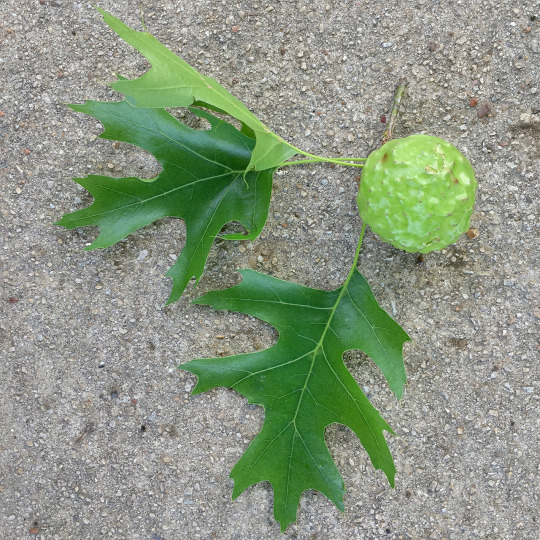
Scientific Name: Amphibolips confluenta Common Name(s): Spongy oak apple gall wasp Family: Cynipidae (gall wasp) Life Stage(s): Larva Location: Allen, Texas Season(s): Spring
There is no wasp larva visible in the photo, but the golf ball-sized lump is the gall it formed. In botany, galls are abnormal growths on plant tissue, and they can be caused by insects, mites, nematodes, fungi, bacteria, and viruses. Insects and mites (usually) have preferred host plants, and the galls they form are distinctive enough that we can determine with reasonable confidence what the causative organism is by examining only the gall and the plant it’s found on, without needing to see the culprit itself.
The purpose of a gall is to provide food and shelter for the occupant(s) inside. During periods of plant growth, such as spring, an insect or mite will take advantage of the rapid cell division in its host and hijack these cells into making a gall instead of developing into regular plant tissue. For oak gall wasps, the process begins when an adult female inserts her ovipositor into a leaf bud to lay an egg. The interaction between the chemicals released by the insect and the host induces cell growth on the plant to form a gall as well as redirect plant nutrients into the gall for the larva to consume. As the gall matures, its color turns from green to tan.
There are hundreds of species of oak gall wasps. “Oak apple” is a common name for these galls, supposedly for their resemblance to apples, but they remind me more of limes than apples. At least it does feel spongy with Amphibolips galls, as the gall is mostly hollow inside, with filaments suspending the larval capsule at its center.
While in strict terms gall formation is a parasitic process, where the wasp gains all the benefits and the oak receives nothing in return, galls affecting leaves seldom cause serious harm to the tree. And because galls are affixed to the plant, they’re easy targets for predators looking to eat the larvae inside. Galls may be unsightly, but they’re generally not considered problematic to the host plant.
#Amphibolips confluenta#spongy oak apple gall wasp#Cynipidae#Allen#Texas#spring#green#oak apple#gall wasp#Hymenoptera#gall#insect#bugblr
5 notes
·
View notes